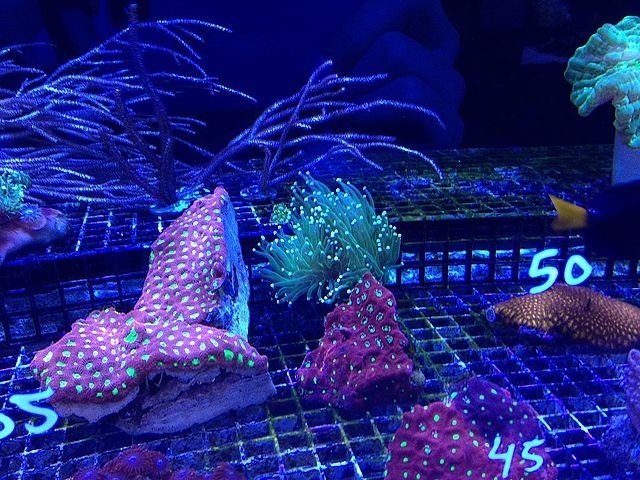by Australian Institute of Marine Science
Key elements of one of the most promising methods to accelerate recovery of degraded coral reefs on a large scale are being tested by the Australian Institute of Marine Science (AIMS).
Coral seeding aims to speed the recovery of coral to a damaged reef by increasing the number of juvenile corals. It involves releasing large quantities of young corals, that were grown in an aquaculture facility and attached to small devices, over the reef.
AIMS scientists working in the Australian Coral Reef Resilience initiative (ACRRI), in the Great Barrier Reef’s Keppel Islands, have demonstrated that corals seeded onto specially engineered devices and placed on fairly healthy reefs had a more than 85 percent survival rate at around one year of age.
Project Lead Dr Carly Randall said the next step was to test these devices on degraded reefs, and release them en masse, rather than placing and securing the devices on reefs by hand as had been done previously.
In November, healthy corals were brought to the National Sea Simulator from the Keppel Islands for spawning.
Recently, the original corals were returned to Woppaburra sea country. Their offspring, attached to 240 devices, were released onto six reefs in the area that ranged from very healthy to heavily degraded.
“The degraded sites included those with high cover of loose rubble which is unstable and can prevent new corals from settling or surviving,” Dr Randall said.
Stay Always Informed
Join our communities to instantly receive the most important news, reports, and analysis from the aquaculture industry.
“Some sites also had significant amounts of seaweed which can compete with corals on nearshore reefs.
“We’re also measuring the natural rates of coral recruitment at our research sites to determine the supply of larvae, and whether the larvae are settling and growing in that environment.
“So, in the degraded reefs, we’ll be investigating whether the main issue is availability of coral recruits or poor survivorship.”
For the first time, half of the reef restoration devices were freely deployed. The researchers expect lower success rates of those devices, as they could get lost amongst rubble or be moved by currents, damaging the fragile corals growing on them. They are using current meters to monitor wave and water motion at the sites.
AIMS researcher Dr Cathie Page said the devices used in this latest experiment were improved: they are smaller, to test more cost-effective versions that could in the future be mass-produced in a large-scale aquaculture operation.
“They are also shaped a little differently to allow them to better settle on the reef,” she said. “We will be studying how the surrounding organisms influence the survival of the corals.”
The research is being conducted in consultation with the Woppaburra Traditional Owners. The team will collect the devices and assess survivorship throughout the year.
BHP and AIMS have jointly committed $27 million to ACRRI, a world-first biodiversity research program to promote coral reef recovery. It’s two-fold approach also involves using underwater acoustics to mimic the sounds of healthy reef ecosystems to lure fish to reefs that are being replenished using coral reseeding.
More about the Australian Institute of Marine Science
The Australian Institute of Marine Science (AIMS) is Australia’s tropical marine research agency. In existence for almost half a century, it plays a pivotal role in providing large-scale, long-term and worldclass research that helps governments, industry and the wider community to make informed decisions about the management of Australia’s marine estate. AIMS science leads to healthier marine ecosystems; economic, social and environmental benefits for all Australians; and protection of coral reefs from climate change. More here: https://www.aims.gov.au/
Editor at the digital magazine AquaHoy. He holds a degree in Aquaculture Biology from the National University of Santa (UNS) and a Master’s degree in Science and Innovation Management from the Polytechnic University of Valencia, with postgraduate diplomas in Business Innovation and Innovation Management. He possesses extensive experience in the aquaculture and fisheries sector, having led the Fisheries Innovation Unit of the National Program for Innovation in Fisheries and Aquaculture (PNIPA). He has served as a senior consultant in technology watch, an innovation project formulator and advisor, and a lecturer at UNS. He is a member of the Peruvian College of Biologists and was recognized by the World Aquaculture Society (WAS) in 2016 for his contribution to aquaculture.




